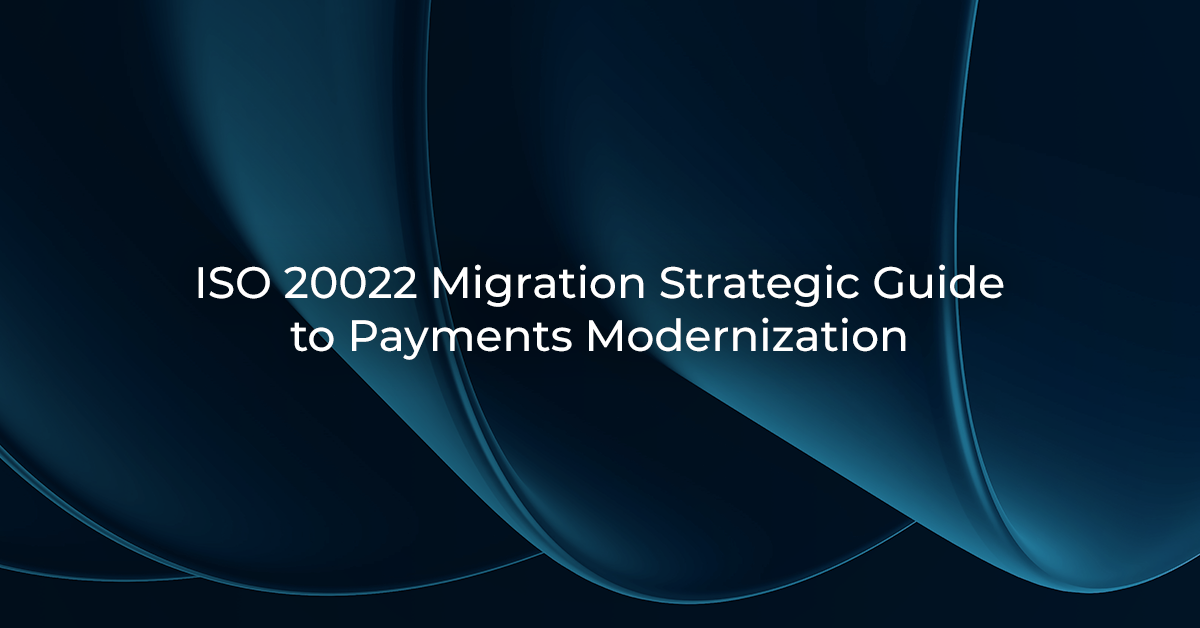
ISO 20022 Migration: Strategic Guide to Payments Modernization
The November 2025 deadline for cross-border payments modernization is rapidly approaching. Payment operations managers face pressure to cut costs, accelerate investigations, and maintain compliance—all while orchestrating complex technology migrations. The financial organizations that act decisively now will transform operational challenges into competitive advantages through strategic implementation.
Why Rich Payment Data Is a Game-Changer?
The transformation from legacy messaging to ISO 20022 represents far more than a technical upgrade—it’s a fundamental shift toward data-driven payment operations. Rich payment data unlocks unprecedented visibility into transaction flows, enabling organizations to reduce manual investigations while dramatically improving customer satisfaction.
Enhanced data structure provides granular transaction details that were previously inaccessible or required extensive manual research. Payment operations teams gain real-time insights into transaction status, routing decisions, and exception handling, transforming reactive processes into proactive management systems. This visibility directly translates to faster resolution times, reduced operational costs, and improved regulatory reporting accuracy.
The business impact extends beyond operational efficiency. Organizations leveraging enriched payment data report significant improvements in customer experience through faster query resolution, more accurate transaction tracking, and enhanced transparency. Financial institutions can now offer value-added services such as detailed transaction analytics, predictive cash flow management, and sophisticated fraud detection capabilities that were previously impossible with traditional MT message formats.
Furthermore, structured data enables advanced analytics and machine learning applications, creating opportunities for revenue generation through improved treasury services, optimized liquidity management, and enhanced risk assessment capabilities that directly impact bottom-line performance.
From Legacy MT to Future-Ready MX: What Changes in Practice?
The transition from MT messages to ISO 20022 XML schema fundamentally reshapes daily payment operations workflows. Unlike the rigid, position-based MT format limited to 35 characters per field, the new standard accommodates extensive structured data that flows seamlessly through the entire payment chain without truncation or loss.
Payment message harmonization eliminates the current patchwork of regional standards and proprietary formats that create operational complexity. Operations teams will work with standardized message types that maintain data integrity across different payment systems, reducing the need for multiple translation layers and minimizing error-prone manual interventions.
The MT to MX conversion process requires careful attention to data mapping and system integration. Legacy systems typically require middleware solutions or complete platform upgrades to handle the XML-based structure effectively. Operations managers must prepare for expanded data validation requirements, as the richer format demands more sophisticated processing capabilities.
Daily workflows will evolve significantly. Investigation processes that previously required hours of manual research across multiple systems can now be completed in minutes through comprehensive transaction data available within single messages. Exception handling becomes more precise, with detailed reason codes and structured explanatory information that enable faster resolution and improved customer communication.
Training requirements extend beyond technical teams to include customer service representatives, compliance officers, and treasury staff who will interact with enhanced data sets. The learning curve is manageable but requires systematic preparation to ensure seamless operational continuity during the transition period.
The Migration Journey: Key Decisions & Pitfalls
Successful ISO 20022 migration demands strategic planning that balances the global ISO 20022 timeline with organizational readiness capabilities. The journey begins with comprehensive impact assessment across all payment-related systems, identifying dependencies that may not be immediately apparent.
Budget allocation represents a critical early decision. Organizations typically underestimate the total cost of migration, failing to account for testing, training, parallel running, and potential system downtime. Smart budgeting includes contingency planning for extended dual-running periods and vendor support requirements that extend beyond initial implementation.
Vendor selection requires careful evaluation of CBPR+ readiness capabilities and long-term support commitments. Many legacy system providers offer migration tools, but organizations must assess whether these solutions provide strategic flexibility or create new dependencies. The decision between upgrading existing systems versus implementing new platforms significantly impacts timeline, cost, and operational risk.
Common pitfalls include inadequate testing of end-to-end scenarios, insufficient staff training, and underestimating the complexity of data mapping requirements. Organizations frequently discover integration challenges with downstream systems that weren’t included in initial migration planning. Additionally, many fail to establish clear governance frameworks for ongoing message format management and updates.
The dual-running phase presents particular operational challenges. Teams must maintain proficiency with both MT and MX formats while ensuring data consistency across parallel systems. This period requires additional monitoring capabilities, staff resources, and careful change management to prevent operational disruptions that could impact customer service levels or regulatory compliance.
Actionable Readiness Checklist
Payment operations managers can begin preparation immediately with these essential steps:
- Conduct comprehensive system inventory assessment – Document all payment-related applications, interfaces, and data flows to identify migration requirements and potential integration challenges before vendor discussions begin.
- Establish cross-functional migration team – Include representatives from operations, technology, compliance, and customer service to ensure all perspectives are considered in planning and implementation decisions.
- Develop ISO 20022 compliance roadmap – Create detailed timeline with milestone checkpoints, testing phases, and contingency plans that align with the November 2025 deadline while accommodating organizational constraints.
- Initiate vendor engagement and evaluation process – Begin discussions with current system providers and potential new vendors to understand capabilities, timelines, and support requirements for migration planning.
- Launch staff education and training program – Start building organizational knowledge of ISO 20022 standards, operational impacts, and new workflow requirements to ensure smooth transition execution.
Turn Insight into Competitive Advantage
ISO 20022 migration represents a strategic inflection point for payment operations. Organizations that approach this transition strategically will emerge with enhanced operational capabilities, reduced costs, and improved customer service levels. The November 2025 deadline creates urgency, but early preparation enables competitive advantage through superior data capabilities and operational efficiency. The institutions that act decisively now will set new industry standards for payment processing excellence and customer satisfaction.
Contact us to be ready for ISO 20022 migration.
Fatih Eyüpoğlu, Senior Service Delivery Manager, Swift Certified Specialist

